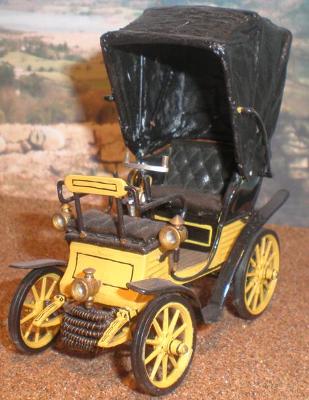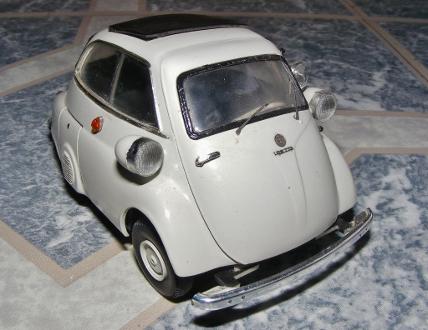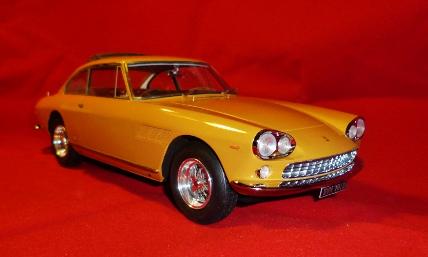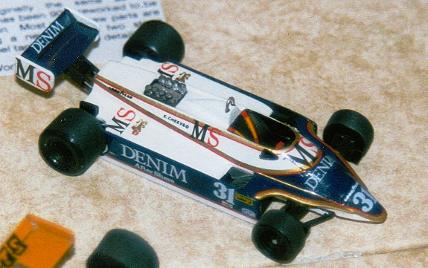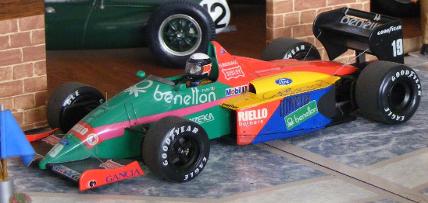Isotta-Fraschini Fratelli Sala coupe de ville
1/43rd scale RIO kit
Founded in 1900 by Cesare Isotta and the 3 brothers Fraschini. They began by importing Renault-De Dion cars, but in 1902 began to build own chassis with De Dion and Aster 1 & 2 cyl. Engines. During the 1920’s-30’s Isotta-Fraschini were the most prestigious car company in Italy.
The type 8 had remarkable technical features. Originally with 5898cc, 90hp engine increased to 7370cc in 1924 eventually to reach 140 hp by 1931. The company went out of production in 1932.
1922 Lancia Lambda
1/32nd scale ILCA kit
Lancia are one of Italy’s oldest car manufacturers having started in 1906.
Bold and innovative the company gained a reputation for its outstanding cars, such as this 1922 Lambda, Lancia had patented a design for a car without a traditional chassis, inspired by a ship's hull. It also had a V4 2120cc engine.
The car was capable of nearly 70 mph. and 12,530 built in 9 Series between 1922-1931.
1954 BMW Isetta 300
1/24th scale Gunze Sangyo kit.
First introduced at the 1953 Turin motor show the Isetta, or "little Iso" was intended to fill the affordable economical car market. It was soon being built all over Europe under licence and is often credited as being the "little car that saved BMW".
Through the 1950s and '60s micro cars were all the rage and the shape of the Isetta led to them being generally called "Bubblecars".
Popularity of the Isetta waned through the 1960's with the introduction of the more spacious and practical VW Beetle, Fiat 500 and Austin/Morris Mini eating into sales, by the end of the decade it was all but obsolete.
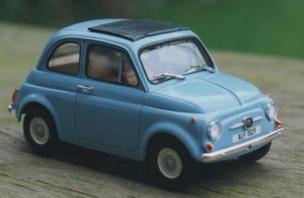
1964 330 GT 2+2 series 1.
1/18th scale BBR model conversion
Ferrari's 330 GT series was the replacement for the 250 series. Ferrari held their annual pre-season press conference in January ’64 and announced their new 330 GT 2+2 with a superior V12 up front and a usable 2+2 layout, with space for a decent quantity of luggage in the rear.
At the top of the Ferrari production car range, this was a Ferrari first, then a Grand Tourer in the most useable of forms. Practical cars, less exhilarating than a 250 GTO but still carrying race proven parts and all the heritage of years on the motor racing circuits of the world.
It was then unveiled to the public at the 1964 European Motor Show in Brussels and said to be a personal favourite of Enzo Ferrari himself.
1980 Osella FA1 "MS Denim"
Hi-Fi Automodelli kit in 1/43rd scale
Designed by Giorgio Stirano, the FA1 monocoque chassis was made from Aluminium honeycomb as was the standard of the time. It was a wing car using air flow under the car to suck it down onto the track.
Unfortunately the car was around 100kg over weight, which created a real handicap at the start of the season. This preponderance was reduced to 45kg in the FA1b but it wasn't enough to make a difference. Eddie Cheever tried to qualify the car all season but in a disappointing year failed to reach the grid 4 times and never saw the chequered flag at all.
1987 Benetton B187
Gunze Sangyo kit in 1/24th scale
Having sponsored the Tyrrell, Alfa Romeo and Toleman F1 teams Benetton Formula Ltd. was formed at the end of 1985 when the Toleman outfit was bought by the Benetton family.
The Benetton B187 car, designed by Rory Byrne, replaced the B186 of the previous season. A noticeably different car from the ‘86 chassis it started a development series that ran through the ‘88 and ‘89 cars too. Also notable was the change in colour scheme which ran on through the following years although the colour positions were alternated.
